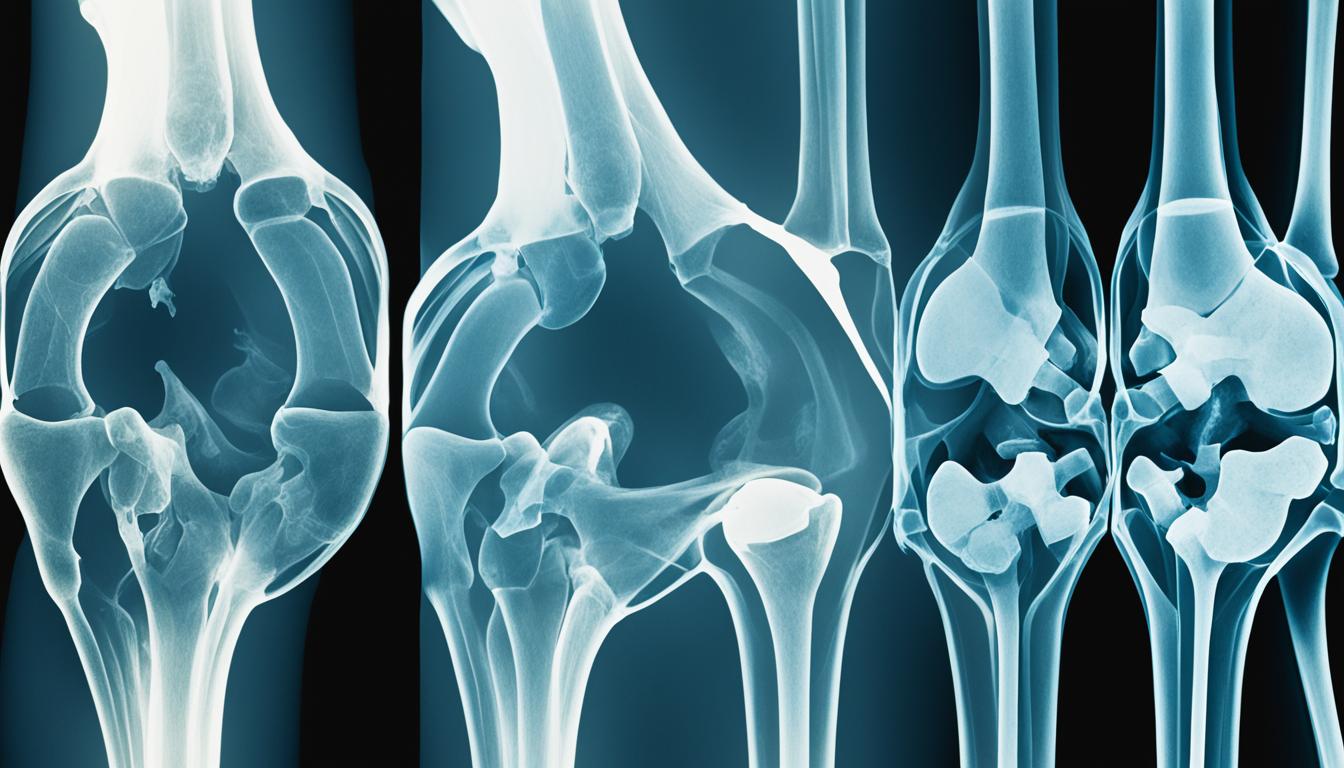Canine hip dysplasia (CHD) is a disease that affects a dog’s hip socket and thigh bone joint. It makes the joint not work well, which can lead to arthritis. This issue often starts with how the hip grows, making it not fit right. Both genes and the environment play a part in causing CHD.
CHD cases have gone up in the last 50 years, especially in certain types of dogs. Things like genes, where a dog lives, and what it eats can make CHD more likely. Being neutered also adds to the risk. Factors like risky play areas and too much fat in food can make things worse.
To find out if a dog has CHD, a vet will check how the dog moves and might order special X-rays. These tests show if there’s a problem in the hip joint. There’s even a specific test, called the Ortolani test, that helps spot CHD.
Stem cell therapy is a new and hopeful way to treat CHD. It uses special cells to help the joint heal and lower pain. Research suggests this treatment can help dogs move better and feel less pain. There are also surgeries and other treatments to help manage CHD. Scientists are always looking for better ways to treat CHD and help dogs.
Key Takeaways:
- Canine hip dysplasia (CHD) affects a dog’s hip joint.
- It comes from a mix of bad genes, environment, and diet.
- Diagnosing CHD needs a vet to check the dog and take X-rays.
- Stem cell therapy offers hope for healing and less pain in CHD.
- There are many ways to treat CHD, like surgery and better diets.
Risk Factors and Diagnosis of Canine Hip Dysplasia
Canine hip dysplasia (CHD) is complicated and influenced by many things like genetics, environment, and diet. It’s important to spot these risk factors. This can help prevent or lessen the impact of CHD.
Risk Factors for Canine Hip Dysplasia
Genetic susceptibility is big in CHD’s development. Breeds like Labrador Retrievers and German Shepherds are at higher risk. This is because they can inherit CHD from their parents.
A long body length-to-height ratio and high body-to-mass ratio can also be risky. These proportions stress the hip joint more, which might cause issues.
Getting neutered, especially when young, might increase CHD risk. This is because neutering can change how hips grow and develop.
Bad environmental factors can also make CHD more likely. Doing exercises on slippery floors is not good. Houses with nonslip floors can help keep the hip joint safe.
Nutrition is key in CHD too. Being overweight, or eating too much fat, can up the risk. To lower this risk, keep dogs at a healthy weight with a good diet.
Diagnosis of Canine Hip Dysplasia
Spotting CHD includes a physical check, x-rays, and special tests. The vet will look at how the dog moves, how much it can move, and feel the hips for issues.
Radiography is often used to diagnose CHD. It provides detailed hip joint images. Tests like OFA certification or PennHIP can help gauge the CHD’s seriousness.
The Ortolani test helps find hip joint problems. Vets move the dog’s hips to see if they are loose or shifted.
Diagnosing CHD early is key. It allows for the right care and for making the dog’s life better.
Stem Cell Therapy and Future Directions for CHD Treatment
Stem cell therapy is a new hope for dogs with CHD. It uses mesenchymal stem cells to repair joints and reduce pain. This offers a bright future for dogs with this condition.
Research shows this therapy improves joint function and cuts down on lameness in dogs. It boosts joint tissue repair, which means dogs move better and have a happier life.
Surgery like total hip replacement and lifestyle changes are other options for severe CHD. Dietary changes and specific medications help in managing pain and slowing the disease’s progress.
Future work focuses on making CHD treatments even better. This includes looking at genetic checks to spot and lower CHD in at-risk breeds. The goal is to bring better health and joy to dogs facing CHD.

